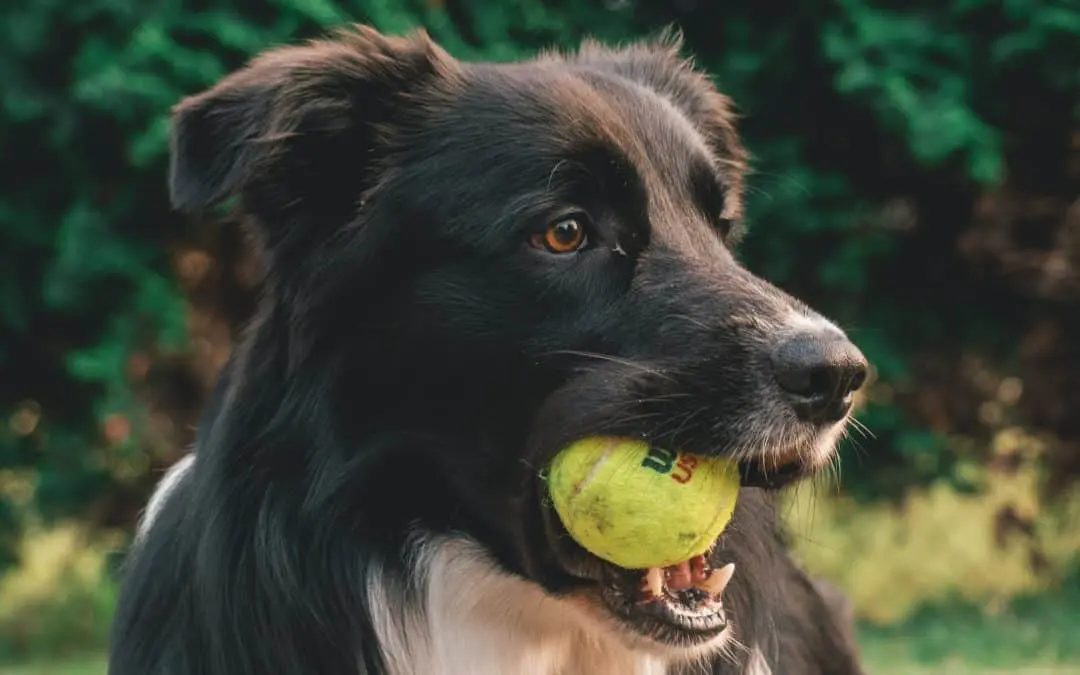If you have a dog, odds are you’ve spent time throwing a ball for them to fetch. But if you have a ball-obsessed dog, you’ve probably spent hours throwing the ball for your furry friend, and that was only today. Some of you have probably even thrown more balls than a major league baseball pitcher!
Some dogs become obsessed with balls, and if they aren’t chasing them, they’re chewing on them. However, not all balls are safe toys for dogs, and tennis balls can be especially bad if your dog likes to chew. Obsessed or not, it is important to understand the risks before you give your dog a tennis ball to play with.
Why Do Dogs Become Obsessed with Tennis Balls?
Being obsessed with balls is pretty common for dogs. The fixation most likely stems from a dog’s instinct to chase down prey for food. (This is often where their chewing habit comes from, too.) A ball—especially one that bounces—mimics the unpredictable movements of small prey animals like mice, rabbits, or birds.
Because it’s so easy for dogs to become obsessed with balls, knowing the risks that tennis balls can pose is essential. Here’s a list of five reasons why tennis balls are bad for dogs.
The Safety Risks of Tennis Balls
1: Obsessive Behavior
Dogs with high prey drives will happily play with a tennis ball all day. It is important to make sure your dog takes breaks while playing to help them regulate. Becoming too obsessed with a ball can cause a few problems.
Dogs have a risk of overheating if they play too long in the heat, or not wanting to stop. They might also exhibit territorial behavior like growling, nipping, or biting at other dogs or people who get too close to their favorite ball.
2: Choking Hazards
Just like marbles are a choking hazard for infants, tennis balls are a choking hazard for dogs. Tennis balls fit easily in larger dogs’ mouths, and because of their rubbery nature, they’re extra dangerous. Once inside a dog’s mouth, a tennis ball can be squeezed smaller and swallowed, only to pop back to its full shape in the throat.
For retrievers, pit bulls, and other large dogs tennis balls are a definite choking hazard. But small dogs do not get off scot-free. Not only are dog toy companies making miniature versions of tennis balls, but small dogs who are intense chewers may also be able to break the ball up into smaller bits that they could choke on.
3: Intestinal Blockages
When a foreign object gets stuck in a dog’s digestive tract and causes an intestinal blockage, the dog will need surgery. Without surgery, an intestinal blockage can be fatal. Intense chewers of all sizes are at risk of blockages if they split a tennis ball into pieces.
4: Dental Issues
Excessively chewing on tennis balls puts your dog at risk for dental problems later. True tennis balls are made to withstand multiple plays on a tennis court, getting hit with rackets and bouncing off the hard ground. Their tough exterior can wear down a dog’s teeth and damage their gums. Damage to the tooth enamel can cause cavities and painful decay, while cut gums can be entryways for infections.
5: Potential Toxins
Tennis balls are not designed to be chewed. During the manufacturing process, tennis balls can be exposed to many different types of toxins—like lead, for example—that can harm your pup if ingested.
To Play, Or Not To Play?
Now that you understand the risks associated with tennis balls, it is up to you to take the proper precautions if you allow your dog to play with one.
- Always supervise the use of tennis balls.
- Do not allow your dog to chew a tennis ball apart, or keep it in their jaws for long periods of time.
- Be aware of obsessive behavior.
If You Notice Troubling Behavior, See Your Vet
Knowing the risks associated with your dog’s toys will help keep them healthy for a long time to come. You also need a veterinarian you can trust. We can help your dog live their best and most playful life through loving, knowledgeable care. Contact East Valley Animal Hospital today for an appointment.
Images used under creative commons license – commercial use (1/6/23). Photo by Tadeusz Lakota on Unsplash.

